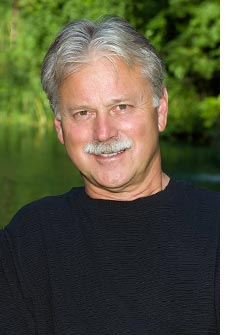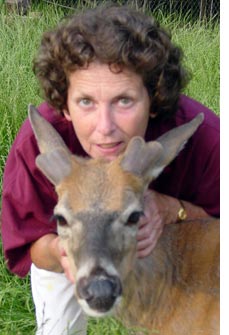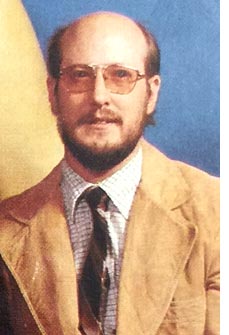
The Taxidermy Hall of Fame Executive committee completed its final vote to establish the inductees for the class of 2017 in May. The four final inductees were announced during the Friday night Awards Banquet in Peoria, Illinois, on May 19, 2017 during the World Taxidermy Championships. The induction ceremony was held in July during the National Taxidermists Association convention in Layton, Utah. The four new inductees are as follows:


Charles Willson Peale
Date of Birth: April 15, 1741
Date of Death: February 22, 1827
Place of Birth: Chester, Queen Anne’s County, Maryland
Burial place: St. Peter’s Churchyard, Philadelphia, Pennsylvania
Charles Willson Peale was the first complete taxidermy-artist living in the United States. While being much more famous as a portrait painter, and as the founder of the first great museum in the United States in Independence Hall having grown out of early efforts on his personal property as early as 1786 and at the headquarters of the American Philosophical Hall, he was a complete taxidermist.
Peale corresponded and traded mounted specimens with the best taxidermists of Europe including Louis Dufresne and Thomas Hall as well as many others. He developed his own methods of taxidermy, many of which persist today as they were passed on to his students and sons, who taught them to others and the lineage continued until the methods were written down by others. Peale mounted the specimens that came back from the Lewis and Clark Expedition, the Stephen Long Expedition to the Rocky Mountains, and many smaller forays. The mounted specimens were used in describing and illustrating such works as the Birds of American by Alexander Wilson.
Peale built the first larger habitat groups using trees, fake ponds and swamps and vegetation, and utilized a painted background for many of his small cases in the Long Room of Independence Hall. The painted background often was set at the place the specimen was collected or a notable locality. For example, the Bald Eagle was set with a background of Niagara Falls which can be seen in an image in the Library of Congress.
Virtually all of the large and medium sized mammals that Peale mounted were destroyed in a massive fire in P.T. Barnum’s American Museum in New York many years after the collection was auctioned off, but some of the birds eventually made their way to the Museum of Comparative Zoology in Harvard, the most notable a Golden Pheasant owned by George Washington, given to him by Lafayette, and then some of the specimens from Lewis and Clark.


Joe Meder
Date of Birth: November 1, 1949
Place of Birth: Guttenburg, Iowa
Current location: Solon, Iowa
As a young man Joe Meder loved hunting and fishing, was intrigued with taxidermy, and studied wildlife with every opportunity. Joe earned a degree in Science Education at the University of Iowa where he studied and worked in its famous Natural History Museum Department, which was established in the1870’s. Notables such as Hornaday, Bailey, and Inchmunk attended and studied in this program. After earning a Masters Degree in Science Education, Joe became a full-time instructor at the University of Iowa from 1973-1981.
Joe, opened Kodiak LTD studios in 1981 on a full-time bases. He became active in competition taxidermy, and in 1985 won Best in World whitetail with an entry that captured everyone’s attention. The deer mount had extreme details of anatomy accurately replicated that few had attempted. In 1986 he won the NTA Best of Show with another deer in an aggressive pose capturing an attitude with even more impressive details and finishing. Joe had set new standards that are now a part of both competition and commercial taxidermy.
From that point forward, Joe became the most sought-after mammal instructor and judge in the United States. His studio, Kodiak LTD, became a magnet for trophy whitetail collectors, and he would soon remount most of the previous world record whitetails and many famous collector antlers. During this time he offered a one-week workshop 7 times each year with many of his students becoming National and World Champions.
Joe has judged over 100 competitions at the state level, the NTA 8 times, the World Championships 14 times, and the European Championships 6 times, as well as national competitions in New Zealand and Russia. Joe served 11 years on the NTA board of directors, 2 years as both vice-president and president. He assisted Tohickon Glass Eyes in developing eyes for mammals and sculptured several lines of whitetail forms and many whitetail artificial parts now sold by McKenzie supply.


Sallie Dahmes
Date of birth: January 4, 1946
Place of birth: Louisiana
Current location: Sparta, Georgia
Sallie Jean Dahmes began her taxidermy career as an apprentice with whitetail legend Joe Coombs before starting her own studio. In 1984 she won a World Champion whitetail deer title, and the following year she won the Carl E. Akeley Award with a teal and the Best in World Gamehead with a mule deer, becoming the first woman to win three gold Akeley medallions.
In 1986, Sallie closed her studio and moved to Georgia to work for Breakthrough Magazine and Wildlife Artist Supply Company. Over the next few years she sculpted a successful line of whitetail deer mannikins and waterfowl forms, wrote magazine articles, created numerous taxidermy instructional videos for professionals and amateurs, and authored several books including The Breakthrough Bird Taxidermy Manual. She also handled technical assistance for WASCO’s customers. Sallie also judged and taught seminars at the World Taxidermy Championships for many years.
In 1988, she purchased the manufacturing operation for Polytranspar Airbrush Paint and began to produce it for WASCO. Over the next five years, she expanded her business to include the videotape and dry chemical division of the company. By 1993, the rest of WASCO’s operation was acquired and she became the owner of WASCO along with her business partner, Ken Edwards.
Sallie served on the BOD of the NTA and has always placed her desire to improve the taxidermy industry over her own personal business interests. After selling WASCO in 2011, she continues to hand-raise fawns for CWD research facilities. Nationally known to cervid experts as the “deer-whisperer”, Sallie’s deer are integral in paving the way for a cure.


Dale Knobloch
Date of Birth: October 3, 1947
Place of birth:
Current location: Jefferson, Maine
Dale Knobloch operated a successful taxidermy business in Buffalo, New York, for 15 years. Wanting to further hone his taxidermy skills, he moved to Denver to associate with other expert taxidermists, and was soon a contracted employee at Jonas Brothers. This move coincided with the first Taxidermy Review and National Taxidermists Association conventions, which he eagerly entered and started winning top awards in single ribbon categories. Being acknowledged for his superb taxidermy mounts fostered a desire within him to solve broader taxidermy applications.
Not having any loyalties to the taxidermy methods used in the 1970’s, he was quick to search for better materials, better resins and foams, and, better adhesives and casting materials. He saw opportunities to improve ways of producing high quality mounts. Dale had been working with paper mache and plaster forms and saw that efficiently sculpting in greater anatomical details could improve molded forms which would need little or no alterations. In these early days he produced a line of game head forms that were ready to use off of the shelf and were known at the Signature Series offered by Jonas Bros. of Denver.
Dale continued his development of products by expanding into designing new ear molds and tanning creams. The widespread use of his revolutionary tanning product TC-9 began replacing the disadvantages of dry preservatives. Today, in the new millennia, such Knobloch products as Liqua-tan, Reptile Tan, Enzol B, skin rehydration Bascal-S, Kemal-4, are commonly found in taxidermy shops and supply companies. His contribution have revolutionized the quality and progressive improvement of preservation techniques of biological specimens. He is now retired from Preservation Solutions, a company he ran from 1998 to 2008.

